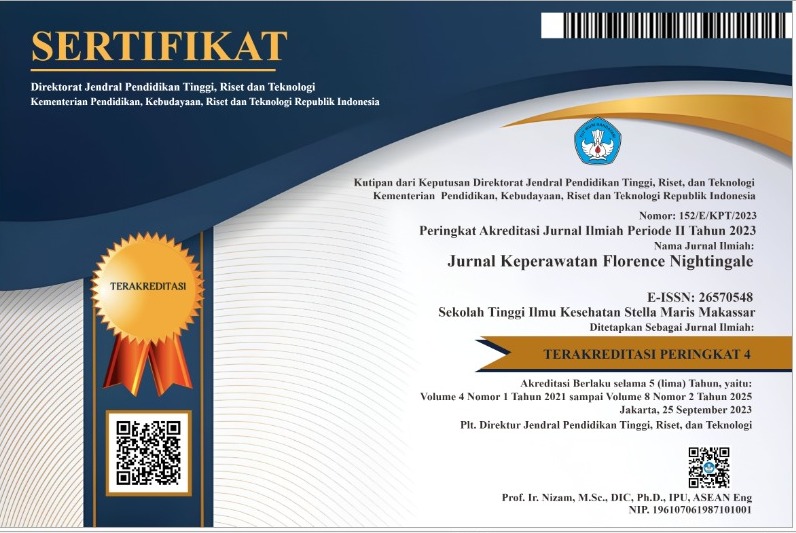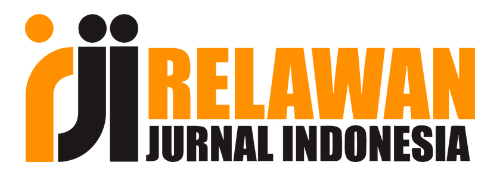The Relationship Between Gadget Addiction and Emotional Intelligence in Adolescents
Keywords:
gadget addiction, emotional intelligence, teenagersAbstract
In the era of digitalization, teenagers are vulnerable to the influence of technology, where gadgets become one of the main sources of interaction and entertainment. Consequently, gadget addiction can disrupt the emotional development of teenagers, reducing their ability to regulate emotions and interact socially. The aim of this study is to investigate the relationship between gadget addiction and emotional intelligence among teenagers at SMK Informatika Sumedang. This research is a quantitative study of observational analytic type with a cross-sectional approach. Sampling method is conducted through quota sampling technique with 101 respondents. There are two instruments used in this study adapted from previous research: SAS-SV to measure the level of gadget addiction and TEIQ-ASF questionnaire to assess emotional intelligence level. This study employs two-stage analysis, namely univariate analysis to determine frequency distribution and bivariate analysis using Spearman rank correlation test. The results of the study show that 56.4% experience high-level gadget addiction and 43.6% low-level, while 76.2% have moderate emotional intelligence, 19.8% low, and 4% high. The bivariate test results obtained a p-value = 0.000 which means there is a relationship between gadget addiction and emotional intelligence. Furthermore, the correlation coefficient value of rho = 0.375 indicates a positive direction of the relationship. In conclusion, there is a relationship between gadget addiction and emotional intelligence among teenagers at SMK Informatika Sumedang. Therefore, Therefore, teenagers need to use gadgets wisely so as not to have an impact on the emotional development of adolescents.
Downloads
References
Alrasheed, K. B., & Aprianti, M. (2018). Hubunga Antara Kecanduan Gadget dengan Kecerdasan Emosi pada Remaja (Sebuah Studi pada Siswa SMP di Kecamatan Setiabudi Jakarta Selatan). Jurnal Sains Psikologi, 7(2), 136–142.
Asosiasi Penyelenggara Jasa Internet Indonesia (APJII). (2023). Survei Penetrasi dan Perilaku Internet. Survei APJII.
Asyia, A. D. N., Sinurat, G. D. N., Dianto, N. I. S. A., & Apsari, N. C. (2022). The I nfluence of Peer Groups on the Developm ent of Adolescent Self-Esteem. Jurnal Penelitian Dan Pengabdian Kepada Masyarakat (JPPM), 3(3), 147–159.
Baderi, & Ekawati, D. (2020). Hubungan Gadget Addiction Terhadap Emosi Dan Perilaku Remaja (Studi di Kelas VIII SMPN 1 Peterongan). Insan Cendekia, 7(2), 114–120.
Bariyyah, K., & Latifah, L. (2019). Kecerdasan Emosi Siswa Ditinjau dari Jenis Kelamin dan Jenjang Kelas. JPGI (Jurnal Penelitian Guru Indonesia), 4(2), 68. https://doi.org/10.29210/02379jpgi0005
Damanik, R. K., Harianja, E. S., Simanjutak, G. V., & Hutabarat, M. T. (2019). Hubungan Tingkat Kecandua Gadget dengan Kecerdasan Emosional Remaja di SMA Negeri 2 Dolok Sanggul Tahun 2019. Jurnal Health Reproductive, 4(1).
Dewi, K. T. S. (2019). Pengaruh Kecerdasan Intelektual, Kecerdasan Emosional Dan Kecerdasan Spiritual Terhadap Kinerja Perawat. Artha Satya DharmaJurnal Kajian Ekonomi Dan Bisnis, 12(2), 167–176.
Firdaus, W., & Marsudi, M. S. (2021). Konseling Remaja yang Kecanduan Gadget Melalui Terapi Kognitif Behavior. Studia Jurnal Hasil Penelitian Mahasiswa, 6(1), 15–24. https://doi.org/10.32923/stu.v6i1.1980
Fitriana, Ahmad, A., & Fitria. (2020). Pengaruh Penggunaan Gadget terhadap Perilaku Remaja dalam Keluarga. Psikoislamedia Jurnal Psikologi, 5(2), 182–194.
Galingging, C. I. S., Pratiwi, D. S., Amaliah, D., Ananda, E., Mubarak, M. Z., Ilmi, B. R., & Asyifa, S. (2022). Dampak Penggunaan Gadget Terhadap Prestasi Belajar Ssiwa MAN 3 Medan di Masa Pandemi Covid-19. Jurnal Handayam PGSD UNIMED, 13(1), 14–20.
Hidayat, R. (2020). Hubungan Lama Penggunaan Gadget dengan Tingkat Kecerdasan Emosional pada Remaja di SMK PGRI Sooko Kabupaten Mojokerto. Sekolah Tinggi Ilmu Kesehatan Bina Sehat PPNI Mojokerto
Ibrahim, A., Alang, A. H., Madi, Baharuddin, Ahmad, M. A., & Darmawati. (2018). Buku Metodologi (I. Ismail, Ed.; 1st ed.). Gunadarma Ilmu. https://repositori.uin-alauddin.ac.id/12366/1/BUKU%20METODOLOGI.pdf
Julian, R. (2021). Stres Kerja Dipengaruhi Oleh Kecerdasan Emosional Beban Kerja Dan Komunikasi. Universitas Komputer Indonesia.
Khairul, R. (2023). Hubungan Kecanduan Gadget atau Gadget Adicction dengan Tingkat Kecerdasan Emosional pada Siswa dan Siswi Kelas VII dan VIII SMP Negeri 7 Kota Jambi. Universitas Jambi.
Nuraini, F., & Wardhani, J. D. (2023). Hubungan Durasi Bermain Gadget dengan Perkembangan Sosial Emosional Anak. Jurnal Obsesi?: Jurnal Pendidikan Anak Usia Dini, 7(2), 2245–2256. https://doi.org/10.31004/obsesi.v7i2.4198
Rini, M. K., & Huriah, T. (2020). Prevalensi dan Dampak Kecanduan Gadget Pada Remaja: Literature Review. Jurnal Keperawatan Muhammadiyah, 5(1), 185–194. http://journal.um-surabaya.ac.id/index.php/JKM
Rizki, S. N., & Suryati, T. (2022). Hubungan Kecanduan Gadget Dengan Emosi Dan Perilaku Remaja Usia 10-19 Tahun. Buletin Kesehatan, 6(2).
Safari, M., & Hestaliana, A. (2019). The Effect of Emotional Intelligence on The Leraning Achievement of Inshafuddin Junior High School Students in Terms of Gender. In Jurnal Ilmiah Pendidikan Anak: Vol. IV (Issue 6).
Sari, S. P., Handayani, Y., & Herliana, I. (2023). Hubungan Tingkat Adiksi Penggunaan Gadget dengan Kecerdasan Emosional pada Anak Usia Sekolah Dasar. Open Access Jakarta Journal of Health Sciences, 2(2), 579–585. https://doi.org/10.53801/oajjhs.v2i2.105
Sugiyono, Prof. Dr. (2022). Metode Penelitian Kuantitatif, Kualitatif, dan R&D (2nd ed.). Alfabeta.
Ulfa Suryani, & Yazia, V. (2023). Hubungan Kecanduan Gadget dengan Gangguan Emosi pada Remaja. Jurnal Keperawatan, 15(2), 517–524. https://doi.org/10.32583/keperawatan.v15i2.862
World Health Organization (WHO). (2023, October 11). Adolescent health. WHO.
Yumarni, V. (2022). Pengaruh Gadget terhadap Anak Usia Dini. Jurnal Literasiologi, 8(2). www.kompas.com
Published
How to Cite
Issue
Section
Copyright (c) 2024 Aisyah Mulyanti, Dewi Dolifah, Delli Yuliana Rahmat

This work is licensed under a Creative Commons Attribution-ShareAlike 4.0 International License.









